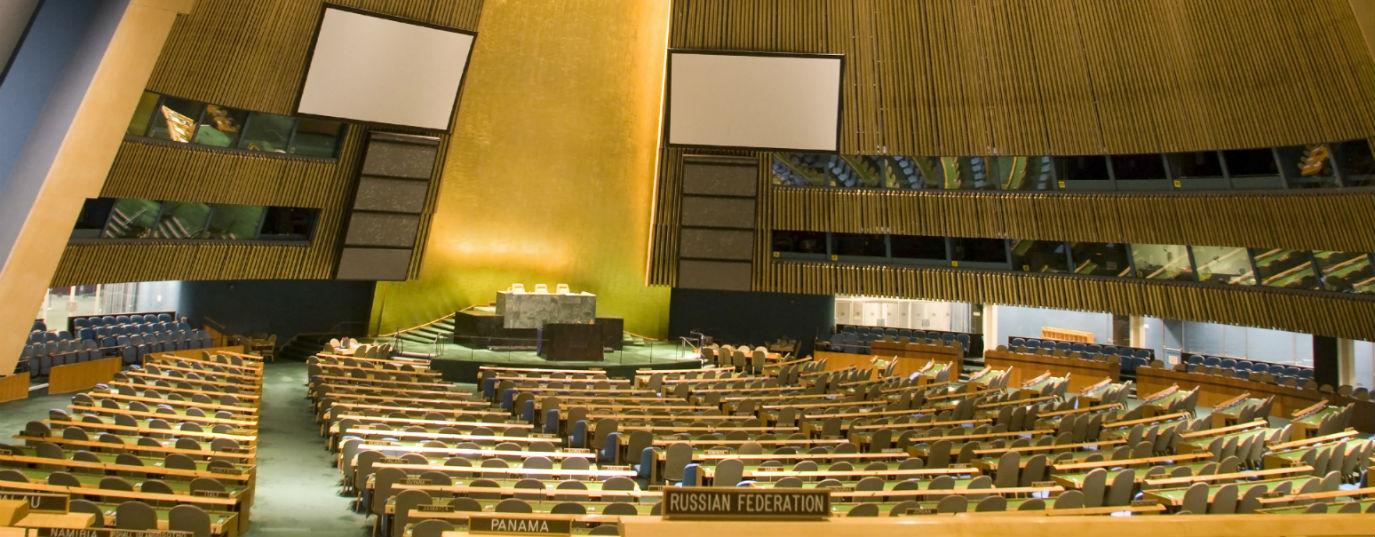Key concepts for understanding COP25
With this glossary of terms you will be able to follow the news on COP25 without getting caught up in acronyms and jargon.
The next United Nations Climate Change Conference — COP25 — will bring together more than 25,000 people in Madrid, from experts, lawyers and consultants, to the world's leading politicians and CEOs. The COP25 motto is "Time for Action", which stresses how pressing it is for the future of the planet that this summit is used to make crucial decisions that will mitigate the climate emergency.
It will involve two weeks of meetings and negotiations, which will see a rise in reporting on how this climate summit progresses. With this in mind, we bring you a list of concepts to help you understand the bodies of the agreements and the information related to COP25 in Madrid:
Paris Agreement
The Paris Agreement was the first global agreement on climate change. It was adopted at COP21 in Paris December 2015 by the 195 countries that have ratified the United Nations Framework Convention on Climate Change. In the Agreement, the parties committed to reducing greenhouse gas emissions and limiting global temperature rise.
United Nations Framework Convention on Climate Change (UNFCC)
The UNFCC has been ratified by 195 countries. Its objective is "to stabilize greenhouse gas concentrations in the atmosphere at a level that would prevent dangerous interference with the climate system".
Conference of the Parties (COP)
Conference of the Parties is the supreme decision-making body of the UNFCC. It is made up of Parties — the countries and organisations of countries such as the European Union, that have ratified the convention. They meet every year for two weeks to address the matter of climate change. The COP is the only body that can make decisions about the implementation of the Convention.
Kyoto Protocol
The Kyoto Protocol, adopted in 1997 in Kyoto (Japan) and in force since 2005, establishes, for the first time, objectives to reduce net greenhouse gas emissions as well as a timetable for the main developed countries and economies in transition. In the first period of the Protocol, since 2008-2012, greenhouse gas emissions from industrialized countries should be reduced by at least 5% below 1990 levels.
Emissions Trading
Parties with commitments under the Kyoto Protocol (Annex B Parties) accepted targets for limiting or reducing emissions. These targets are expressed as levels of allowed emissions, or assigned amounts, at over the 2008–2012 commitment period. The allowed emissions are divided into assigned amount units (AAUs). It is based on market regulations and allows the trade (buying and selling) of surpluses or approved but unrealized emissions to compensate for greenhouse gas emissions by countries or companies that are required to reduce them.
Intergovernmental Panel on Climate Change (IPCC)
The IPCC was created in 1988 to provide regular comprehensive assessments to determine the state of scientific, technical and socio-economic knowledge on climate change, its causes, potential impacts and mitigation strategies. The most recent reports by the IPCC state that "rapid, far-reaching and unprecedented" changes are needed to limit temperature rise to 1.5 degrees.
Talanoa Dialogue, also known as facilitative dialogue
This initiative was launched at COP23 in Bonn. It is a process of inclusive, participatory and transparent dialogue that involves the sharing of ideas, skills and experience related to the fight against climate change. Governments — along with civil society, NGOs, businesses, cities and others — are invited to submit stories responding to three questions: Where are we? Where do we want to go? How do we get there?
Paris Rulebook
The set of rules that will govern functioning and fulfilment of the Paris Agreement. These rules will allow to measure, in a framework of common transparency, the efforts to fight against the climatic emergency, adaptation to its impacts and financing that the parties have committed themselves to making.
Nationally determined contributions (NDCs)
Nationally determined contributions, or NDCs are the commitments made by member countries of the Conference of the Parties following the signing of the Paris Agreement with the aim of reducing greenhouse gas emissions. These challenges are based on their respective situations and realistic capacities, and focus on mitigation actions, but also include commitments to adaptation, funding or technological innovation.
Global temperature rise:1.5°C
The maximum temperature above pre-industrial levels that global warming can reach in accordance with the most ambitious objective set out in the Paris Agreement. The Agreement talks about not exceeding 2°C, and making efforts not to reach 1.5°C, but IPCC scientists have already warned of the serious danger faced by the planet if the latter figure is exceeded.
Sustainable Development Goals (SDGs)
In 2015, 193 UN member states adopted the 2030 Agenda, which sets out the Sustainable Development Goals. These are 17 ambitious objectives, broken down into 169 targets to eradicate poverty, protect the planet and guarantee human well-being worldwide. The collaboration of civil society and the public and private sectors is needed in order to reach these Sustainable Development Goals. Success would mean a more egalitarian and liveable world.
SDG 13: Climate action is key to the COP25 agenda as it addresses measures for combating climate change and its impacts.
Carbon neutrality
Carbon neutrality is the equivalent of a net result of zero emissions. There are several ways of achieving this balance, which is being achieved to a large extent thanks to the gradual elimination of the use of fossil fuels (oil, coal, natural gas, etc.), which are the main causes of global warming. When it is difficult to further reduce emissions, or the cost of the measures is very high, CO₂ certificates can be acquired to compensate for emissions made elsewhere and promote sustainable development.
Carbon price, one of the key issues in the COP25
This is the cost applied to greenhouse gas pollution. Carbon pricing can be implemented using an emissions trading system or a carbon tax. Carbon price always is one of the key issues discussed in the negotiations.
Source: Conexión COP



